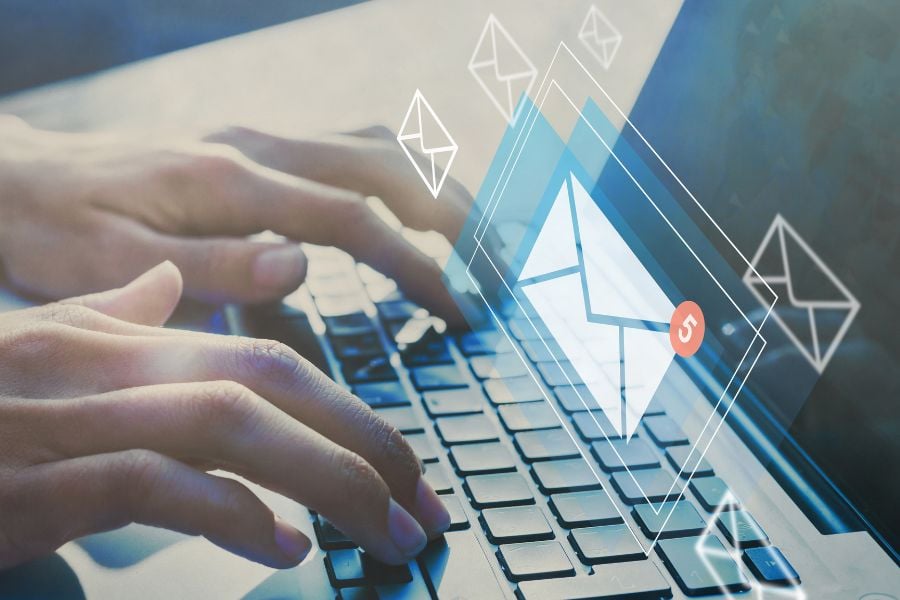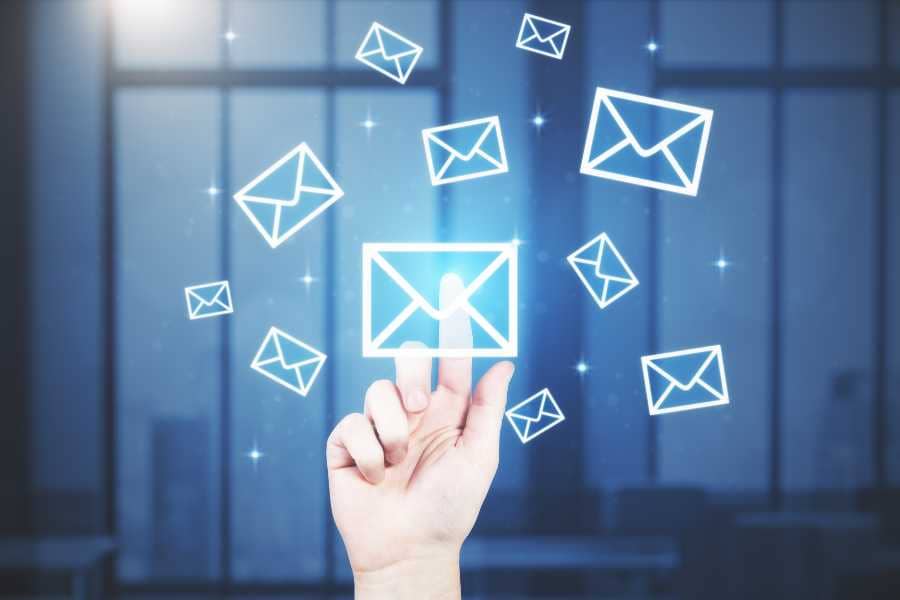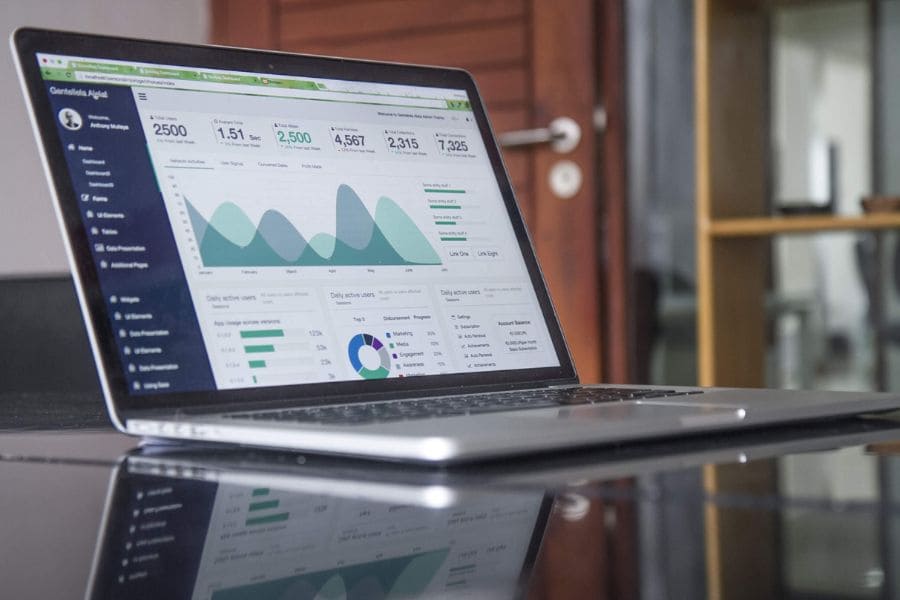Navigating the tricky landscape of email marketing?
Email deliverability is your secret weapon to bypass the dreaded spam folder and land directly in your target audience’s inbox.
Packed with actionable insights and techniques, our guide will transform your emails from avoidable spam to must-read content.
Ready to unlock your email potential and boost your marketing game?
Let’s jump in!

What is Email Deliverability (& Why it’s Important)?
In the labyrinth of email marketing, email deliverability stands as your secret weapon.
But what exactly does it entail?
At its simplest, email deliverability refers to the ability of your emails to land directly into subscribers’ inboxes.
Seems straightforward, doesn’t it? However, the subtleties in the concept beg for a deeper understanding.
Consider this… studies reveal that an acceptable email delivery rate hovers around 95%.
To break it down, for every 1000 emails you send, approximately 950 should hit the bullseye — the inbox.
But what about the elusive remaining 50?
These strays might find themselves lost in the wilderness of the spam folder, a destination dreaded by every email marketer.
Now, you might be asking yourself, why does email deliverability hold such weight?
The reason is quite simple…
Even the most creatively engaging email crafted with finesse amounts to naught if it doesn’t reach the recipient’s inbox. It’s akin to writing an excellent novel that no one reads.
Plus, understanding the importance of email deliverability sets a sturdy foundation for your email campaign.
Now, let’s delve into the tips…
12 Tips That’ll Elevate Your Email Deliverability Rate (& Avoid the Spam Folder)

Now that we understand the basics of email deliverability let’s discuss the actionable strategies you can adopt to avoid the spam folder and elevate your delivery rate…
1. Understand ISP Guidelines
Every Internet Service Provider (ISP), like Amazon SES, Google Workspace, or Constant Contact, has a unique set of guidelines to determine what emails get delivered and what emails get marked as spam.
These guidelines often include technical aspects like IP address and domain reputation, the relevance of your content, and your history of following CAN-SPAM laws. Ignoring these guidelines can result in a decrease in your delivery rate.
For instance, if you’re using Google Workspace, it’s crucial to be familiar with their bulk sender guidelines.
Google evaluates emails based on factors like authentication, list quality, and sending email practices.
So, by tailoring your email marketing campaign in line with these guidelines, you can improve your chances of avoiding the spam trap.
2. Authenticate Your Emails
Email authentication is like a digital signature; it proves your emails originate from a legitimate source.
Techniques like Sender Policy Framework (SPF), DomainKeys Identified Mail (DKIM), and Domain-based Message Authentication, Reporting & Conformance (DMARC) play a pivotal role in maintaining your sender reputation.
Let’s say you are sending a cold email from “newsletter@yourdomain.com”.
With SPF, you can authorize your domain to send the cold email, preventing spammers from using it.
DKIM, on the other hand, allows you to add a digital signature to your emails, validating your domain name identity.
And DMARC, a protocol that uses SPF and DKIM, helps protect your domain from phishing scams and spoofing.
When implemented correctly, these authentication techniques tell ISPs that you are who you claim to be, increasing the likelihood of your emails landing in the inbox.
3. Maintain a Good Sender Reputation
Maintaining a robust sender reputation is essential for high email deliverability. Your sender reputation is like a credit score; it demonstrates your trustworthiness as a sender.
Factors contributing to this reputation include your email volume, complaint rate, bounce rate, and whether or not you’ve been blacklisted in the past.
For instance, if your emails frequently bounce because the recipient’s email addresses are incorrect or no longer in use, ISPs might see this as a sign of poor list management and flag your emails as spam.
Thus, it’s crucial to regularly check and clean your email list to maintain a good sender reputation.
4. Manage Your Email List

Your email list is a valuable asset. However, it’s not just about size; it’s about quality and engagement.
Regularly cleaning your email list of inactive subscribers, email addresses that bounce, and spam traps can increase your sender score, which ISPs use to determine if your email is spam or not.
For example, if a user hasn’t opened your emails in the past six months, it might be worth removing them from your list or placing them in a re-engagement campaign.
Similarly, if an email bounces more than once, it’s best to remove it to prevent harming your sender reputation.
By managing your email list effectively, you not only improve deliverability but also ensure that your content reaches engaged and interested parties.
5. Monitor Email Deliverability
Monitoring your email deliverability is an integral part of your email marketing strategy.
So, consider using an email deliverability tool such as Postmark, Mail-tester, or GlockApps.
These tools not only track your delivery rate and inbox placement but also identify issues in your emails that could trigger spam filters.
For example, they can evaluate your subject lines, content, and email list health, providing actionable feedback to improve your deliverability.
Regular monitoring and troubleshooting can help you understand your email performance better and email address any potential issues early, ensuring your emails reach their intended inboxes.
6. Content Matters
Content is the heart of your email. It can either make your email a hit or a miss with ISPs’ spam filters.
When crafting your emails, avoid phrases that are commonly used in spam messages, such as “get rich quick,” “risk-free investment,” or “save up to.”
ISPs have advanced spam filters that are triggered by such phrases, which may lead to your emails landing in the spam folder.
Furthermore, avoid using a single large image in place of text. If your email is just one big image with minimal text, spam filters may become suspicious and flag it.
Instead, maintain a healthy text-to-image ratio and use ALT text for images, ensuring your message is still conveyed even if the images don’t load.
7. Personalize Your Emails
Personalized emails resonate more with your subscribers and have a lesser chance of being marked as spam.
Rather than sending the same generic message to everyone on your list, use personalization techniques to make your emails more relevant and engaging.
This could be as simple as addressing the recipient by their first name in the subject line or as complex as using behavioral data to customize the content to each recipient’s interests or past actions.
For instance, if a subscriber recently purchased a coffee maker from your website, you could send them an email with tips on brewing the perfect cup of coffee.
Not only does personalization improve engagement, but it also helps to build a deeper relationship with your subscribers.
8. Ask to be Whitelisted

Whitelisting is like having a VIP pass to your subscriber’s inbox. When a subscriber adds you to their email provider’s whitelist, it tells the provider that they want to receive your emails, significantly reducing the chances of your emails being marked as spam.
You can encourage subscribers to whitelist you by including a simple request in your welcome email or in the footer of your newsletters.
For example, “To ensure our emails always reach your inbox, please add our email address to your contacts or safe senders list.”
The process of whitelisting varies between email providers, so it’s helpful to include a link to a page with step-by-step instructions for different providers.
This proactive step can greatly enhance your email deliverability and ensure a consistent subscriber experience.
9. Respect the Unsubscribe
Honoring your subscribers’ wishes isn’t just about goodwill; it’s also a solid strategy for email deliverability. If a subscriber wants to leave, make it as straightforward as possible for them.
This may seem counterintuitive, but in reality, it’s better than getting a spam complaint which can tarnish your sender reputation.
Besides, an unengaged audience can harm your open and click-through rates. Implement a one-click unsubscribe option in a clear, easy-to-spot area in your email. Also, consider having an exit survey.
This optional feedback form can provide invaluable insights into why subscribers are leaving, helping you to improve and adapt your content strategy.
10. Use a Reputable Email Service Provider (ESP)
Your choice of ESP could make or break your email deliverability. A good ESP, not only offers robust infrastructure but also provides valuable advice and support to improve your email deliverability.
They manage relationships with ISPs and stay updated on the ever-changing landscape of email regulations, ensuring your emails are always compliant. Moreover, top-tier ESPs offer comprehensive analytics tools.
These tools can help you monitor your email campaigns, enabling you to spot any potential issues and adapt your strategy accordingly.
11. Test Your Emails
Regular email testing is a must for achieving high deliverability rates.
This is more than just sending emails to a friend. Services such as GlockApps or Mail-Tester allow you to check if your emails are landing in the spam folder, if your IP has been blacklisted, or if you’re encountering other deliverability issues.
It’s also crucial to test your emails across different email clients (like Gmail, Yahoo, Outlook) and devices to ensure your content displays correctly.
Use A to B testing to see what subject lines, email content, or sending times resonate most with your target audience, further optimizing your email marketing strategy.
12. Monitor Your Metrics

Email marketing metrics are your North Star in the realm of email deliverability. Key metrics such as email deliverability rate, open rate, click-through rate, and bounce rate can offer valuable insights into your performance.
For instance, a high bounce rate could indicate an outdated email list, while a low open rate might suggest your subject lines aren’t captivating enough.
Monitoring these metrics allows you to identify trends, spot issues, and make data-driven decisions to optimize your campaigns.
Remember, continuous improvement is the name of the game in email marketing.
Use these metrics to guide your strategy, refine your messaging, and ultimately, deliver emails your audience is eager to open.
Mastering the Art of Email Deliverability
You’ve weathered the storm, wrestling with frustration as your meticulously crafted emails vanished into spam.
But cheer up, there’s a silver lining.
With our email deliverability tips, your emails will no longer be the wallflower at the party, but the guest of honor in your recipient’s inbox.
So, stand tall, and let’s conquer that spam folder together!



